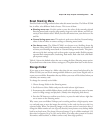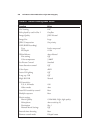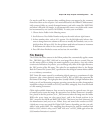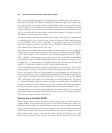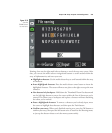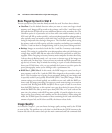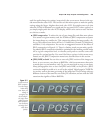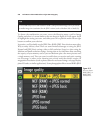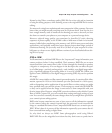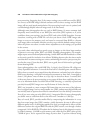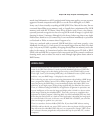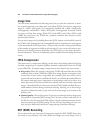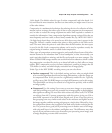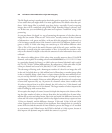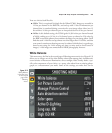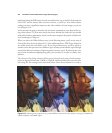Normal so they’ll have a moderate quality JPEG file for review only and no intention
of using for editing purposes, while retaining access to the original RAW file for serious
editing.
For most work, using lower resolution and extra compression is false economy. You never
know when you might actually need that extra bit of picture detail. Your best bet is to
have enough memory cards to handle all the shooting you want to do until you have
the chance to transfer your photos to your computer or a personal storage device.
However, reduced image quality can sometimes be beneficial if you’re shooting
sequences of photos rapidly, as the D7000 is able to hold more of them in its internal
memory buffer before transferring to the memory card. Still, for most sports and other
applications, you’d probably rather have better, sharper pictures than longer periods of
continuous shooting. Do you really need 20 or 30 shots of a pass reception in a foot-
ball game, or a dozen or two slightly different versions of your local basketball star driv-
ing in for a lay-up?
JPEG vs. RAW
You’ll sometimes be told that RAW files are the “unprocessed” image information your
camera produces, before it’s been modified. That’s nonsense. RAW files are no more
unprocessed than your camera film is after it’s been through the chemicals to produce
a negative or transparency. A lot can happen in the developer that can affect the qual-
ity of a film image—positively and negatively—and, similarly, your digital image under-
goes a significant amount of processing before it is saved as a RAW file. Nikon even
applies a name (EXPEED) to the digital image processing (DIP) chip used to perform
this magic.
A RAW file is more similar to a film camera’s processed negative. It contains all the infor-
mation, captured in 12-bit or 14-bit channels per color (and stored in a 16-bit space),
with no sharpening and no application of any special filters or other settings you might
have specified when you took the picture. Those settings are stored with the RAW file
so they can be applied when the image is converted to a form compatible with your
favorite image editor. However, using RAW conversion software such as Adobe Camera
Raw or Nikon Capture NX, you can override those settings and apply settings of your
own. You can select essentially the same changes there that you might have specified in
your camera’s picture taking options.
RAW exists because sometimes we want to have access to all the information captured
by the camera, before the camera’s internal logic has processed it and converted the
image to a standard file format. Even Compressed RAW doesn’t save as much space as
JPEG. What it does do is preserve all the information captured by your camera after it’s
been converted from analog to digital form.
So, why don’t we always use RAW? Some photographers avoid using Nikon’s
RAW NEF files on the misguided conviction that they don’t want to spend time in
Chapter 8 ■ Setup: Playback and Shooting Menus 237



